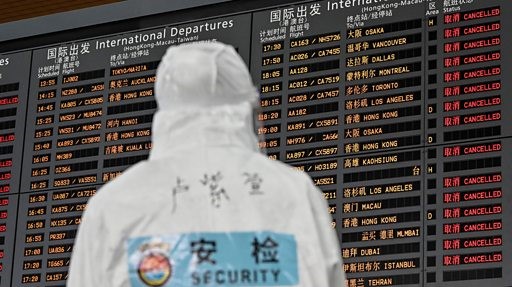Widgetized Section
Go to Admin » Appearance » Widgets » and move Gabfire Widget: Social into that MastheadOverlay zone
China’s resumption of customs clearance: How big is the risk of the virus spreading abroad?
As China opened its doors, there were also concerns among medical experts that the widespread spread of the virus in the country could lead to mutations.
“China has a large population and limited immunity,” Stuart Campbell Ray, an infectious disease expert at Johns Hopkins University, was quoted by the Associated Press as saying. “It’s an environment where it seems like we might see an outbreak of new strains.”
“When we see a large wave of infections, it usually creates new variants,” Ray said.
Japan, India, South Korea and Italy are among the countries that appear to be concerned about the widespread outbreak in China and have tightened quarantine measures. On Tuesday, Japanese Prime Minister Fumio Kishida announced emergency measures to strengthen entry quarantine from midnight on December 30, citing reports of a surge in COVID-19 infections in the Chinese mainland.
The Kyodo News agency reported that all people traveling from China to Japan and those who have visited China within seven days will be subject to entry-point testing. “It is difficult to get a detailed picture of the situation in China due to discrepancies between the central and local authorities, and between the government and the private sector,” Kishida said, adding that concerns are growing in Japan.
India has asked tourists from China, Japan, South Korea, Hong Kong and Thailand to provide negative tests for the virus, the health minister said on Saturday.
Minister Mansukh Mandaviya said travelers from those countries will be quarantined if they show symptoms or test positive for the virus.
Regarding the risks of customs clearance in mainland China and Hong Kong, Zhang Hui, professor of preventive medicine at Northwestern University in the United States, said in an interview that medical risks are two-faced: on the one hand, what risks will be brought to the mainland by Hong Kong people entering the mainland; On the other hand, what risks will be brought to Hong Kong by mainland residents coming to Hong Kong.
“First, will Hong Kong people come to the mainland to bring risks to the mainland? There will always be risks, but I think they are basically small, because the virus has spread widely in the mainland,” Zhang Hui pointed out.
“What has been neglected in the discussion at the moment is the risk to Hong Kong from people from the mainland coming to Hong Kong. The risk of the virus spreading over a large area in the mainland and the risk of new strains emerging as the virus replicates in large numbers may be a little bit greater than the previous risk.”
But Zhang said the risk is not expected to be big enough for policy makers to change entry policies, because the main strain on the mainland is Omicron Bs.7 or other highly transmissible strains, which are close to the “ceiling of viral transmissibility.” The emergence of a new dominant strain that could defeat them would require significantly more realistic transmission capacity, and achieving such a mutation would be difficult, or a small probability event.
“The risk in both directions cannot be zero, but I think the risk is relatively low,” Zhang Hui said. “Currently, Europe and the United States are very worried about the emergence of a new and stronger strain from the mainland sweeping the world again. Although I understand the scientific reason behind their concern, it should not affect the entry of mainland residents to other countries as the probability is very low.”


